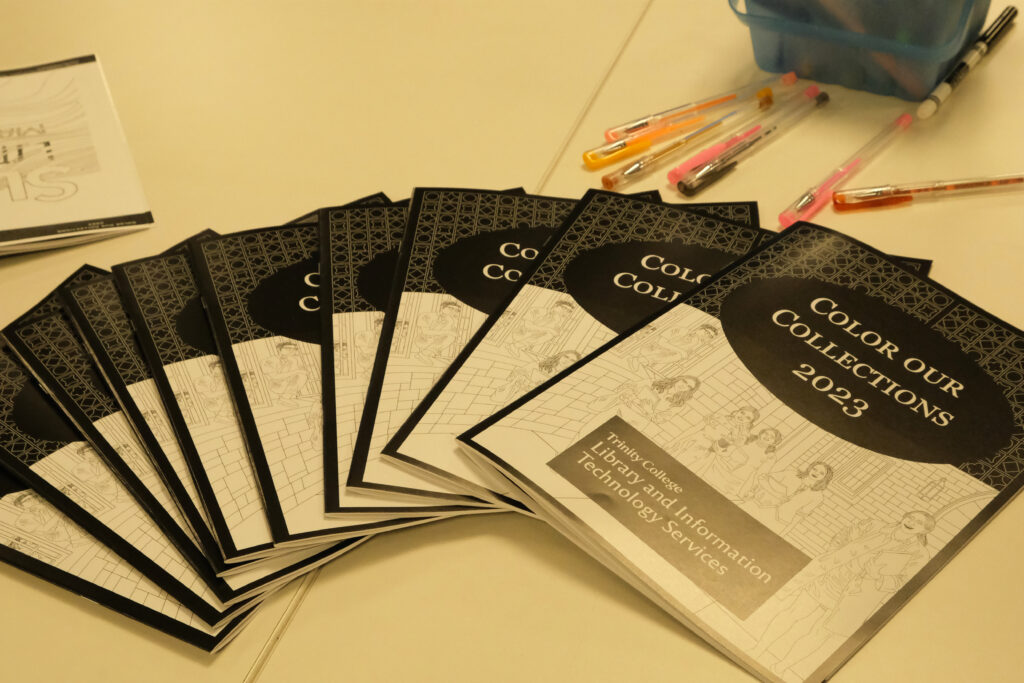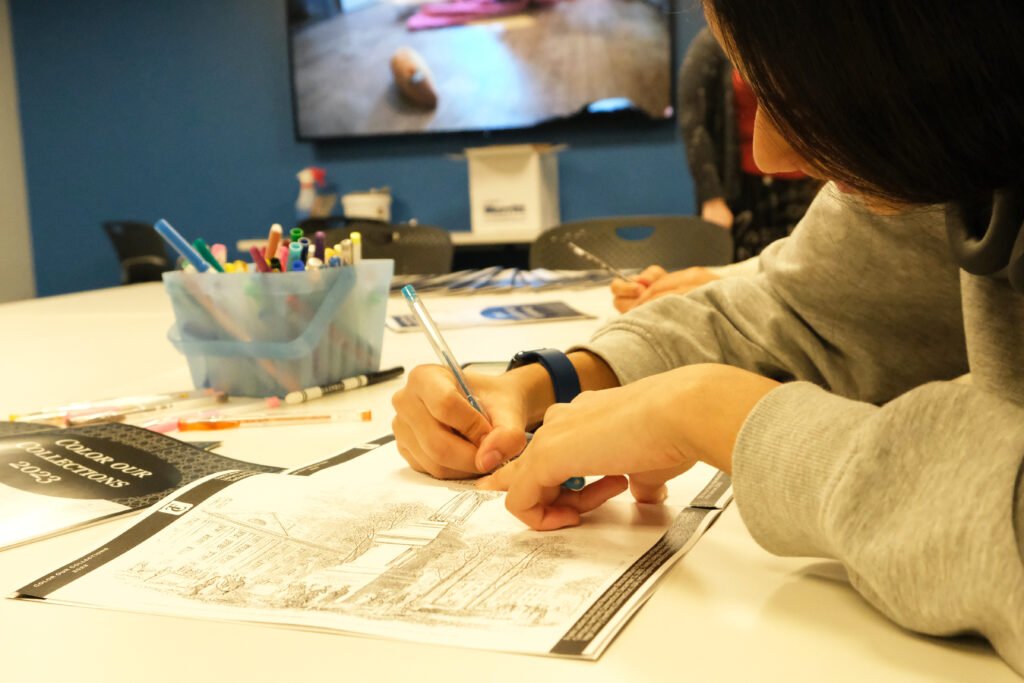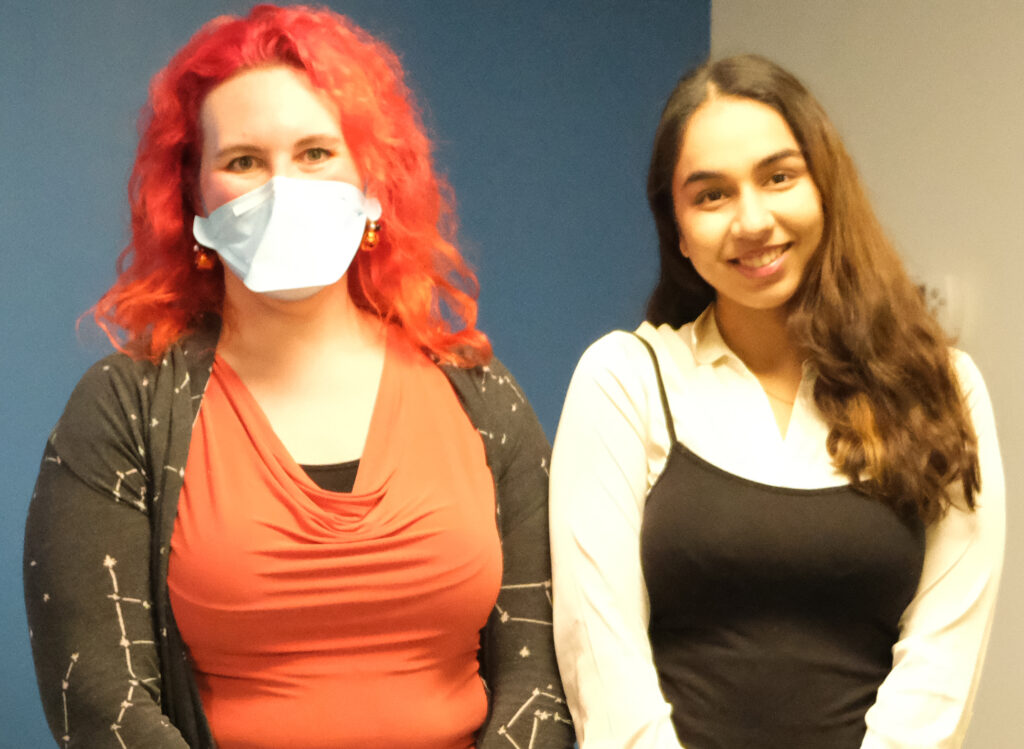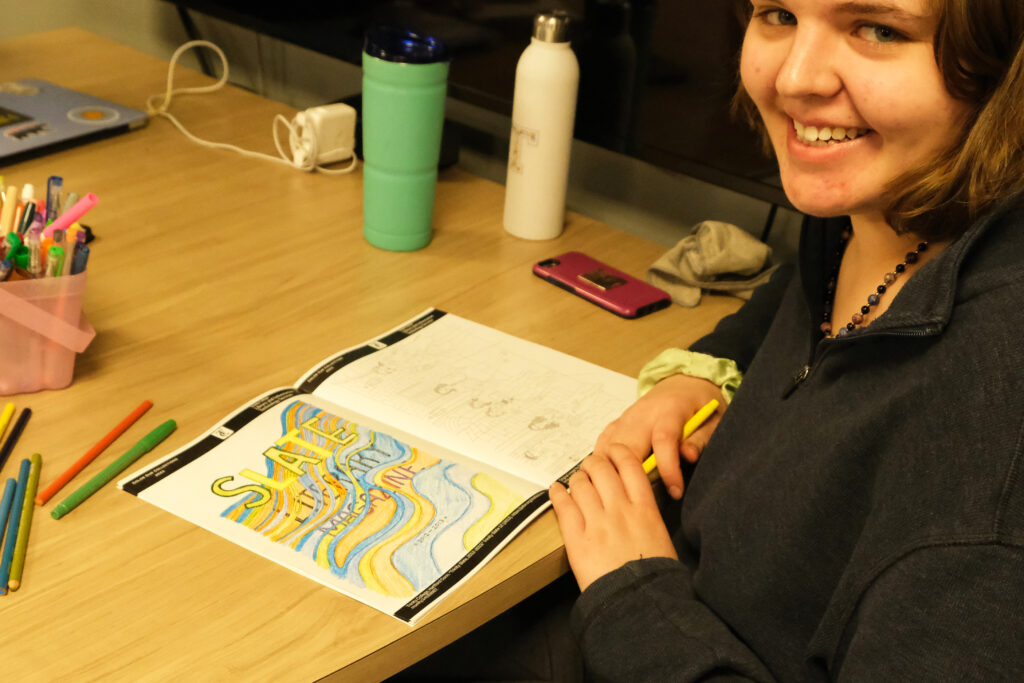New Coloring Book Features Trinity Student Artwork and Archival Treasures
This year’s “Color Our Collections” coloring book is giving the Trinity community a way to explore the library’s archival treasures through interactive art.

Trinity’s Library and Information Technology Services and the Bantams in Balance student wellness program hosted a launch event for the 2023 edition of the coloring book on December 9 in the library’s Digital Scholarship Lab. #ColorOurCollections is a national movement started by the New York Academy of Medicine to connect people with library collections through coloring.
LITS staff members introduced #ColorOurCollections to Trinity in March of 2020, just before the COVID-19 pandemic hit. “We initially had an in-person launch event before COVID shut campus down and students had to quarantine in their rooms,” said Mary Mahoney, digital scholarship strategist. Library staff then created kits for people to do on their own. “We wanted to give students who were limited to what they could do socially a helpful distraction or stress relief. It ended up reaching a lot of students,” Mahoney added.
 This project, according to Mahoney, influenced the creation of more engagement opportunities for students in the library, like the art supply library and a knitting and crocheting group. Mahoney worked on the coloring book project with Rosie Beranis, wellness librarian and experiential learning coordinator; Amanda Matava, head of digital asset management; Kim Rinaldo, systems and collections librarian; and Joelle Thomas, digital learning and discovery librarian.
This project, according to Mahoney, influenced the creation of more engagement opportunities for students in the library, like the art supply library and a knitting and crocheting group. Mahoney worked on the coloring book project with Rosie Beranis, wellness librarian and experiential learning coordinator; Amanda Matava, head of digital asset management; Kim Rinaldo, systems and collections librarian; and Joelle Thomas, digital learning and discovery librarian.
Matava said that archival images are selected by a coloring book committee. “They are converted using Photoshop, then cleaned up to remove excess graininess, and the coloring book covers, pages, graphics, and text are designed using Adobe InDesign,” Matava said.

This year, the library held a contest for students to submit their own art to be featured in the coloring book alongside archival images. The student contest winner, Saisha Uttamchandani ’26, said, “This contest was a way for me to get involved with art at Trinity as a first-year. I picked a design that involved feminism and women because that is important to me, but also something that was wholesome for the Trinity community.”
Reese San Diego ’25, Charlie Taing ’25, and Tiana Sharpe ’23 were the runners-up whose artwork is also featured in the coloring book. Many of the students involved have an interest in art, so the opportunity to create images outside the classroom allowed them new artistic outlets. Taing said, “This opportunity to participate in the coloring book shows how Trinity values students as artists and encourages us to do art on top of our studies.”

Mahoney added, “The coloring book project is not only a way for students to participate in a stress-relieving activity, but also to become engaged with the community, archives, and other students.” The book was published in time for the bicentennial year at Trinity, which was founded in 1823, so it features moments from 200 years of College history.
Max Norton ’23, a student who attended the launch event, said, “The coloring book is a beautiful celebration of student artistic talent.”
Claire Beaulieu ’25, another student at the launch event, said, “It is a great stress relief for students before finals.”
The project gives all students the opportunity to explore the college archives outside of their classes, according to Mahoney. “The coloring book raises awareness of archival treasures among students, even if they aren’t in a class that brings them into the Watkinson Library,” she said.
Members of the Trinity community can find copies of the coloring book in the art supply library, on tables in library study spaces, and at library events. Copies also may be printed from the Trinity College Digital Repository.
